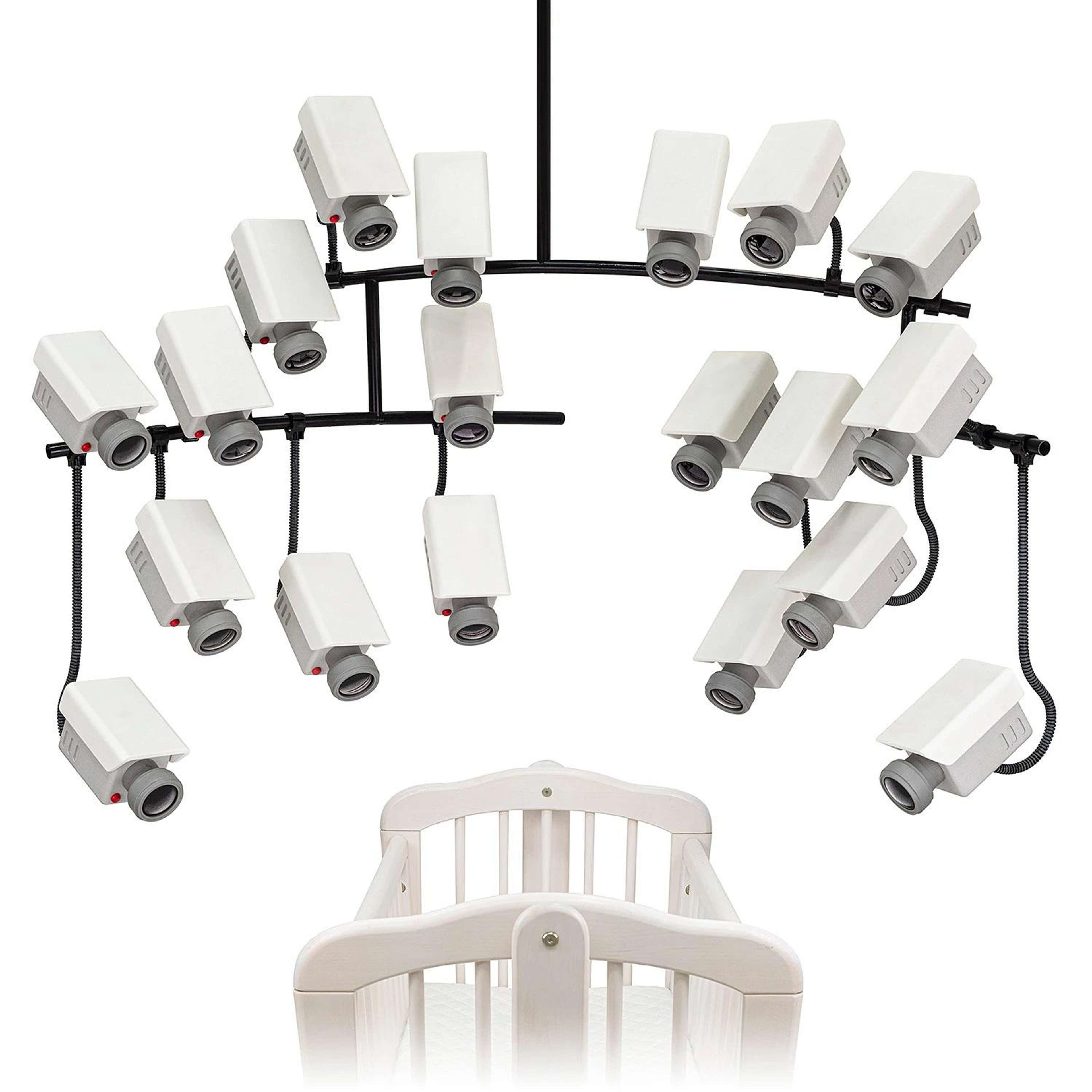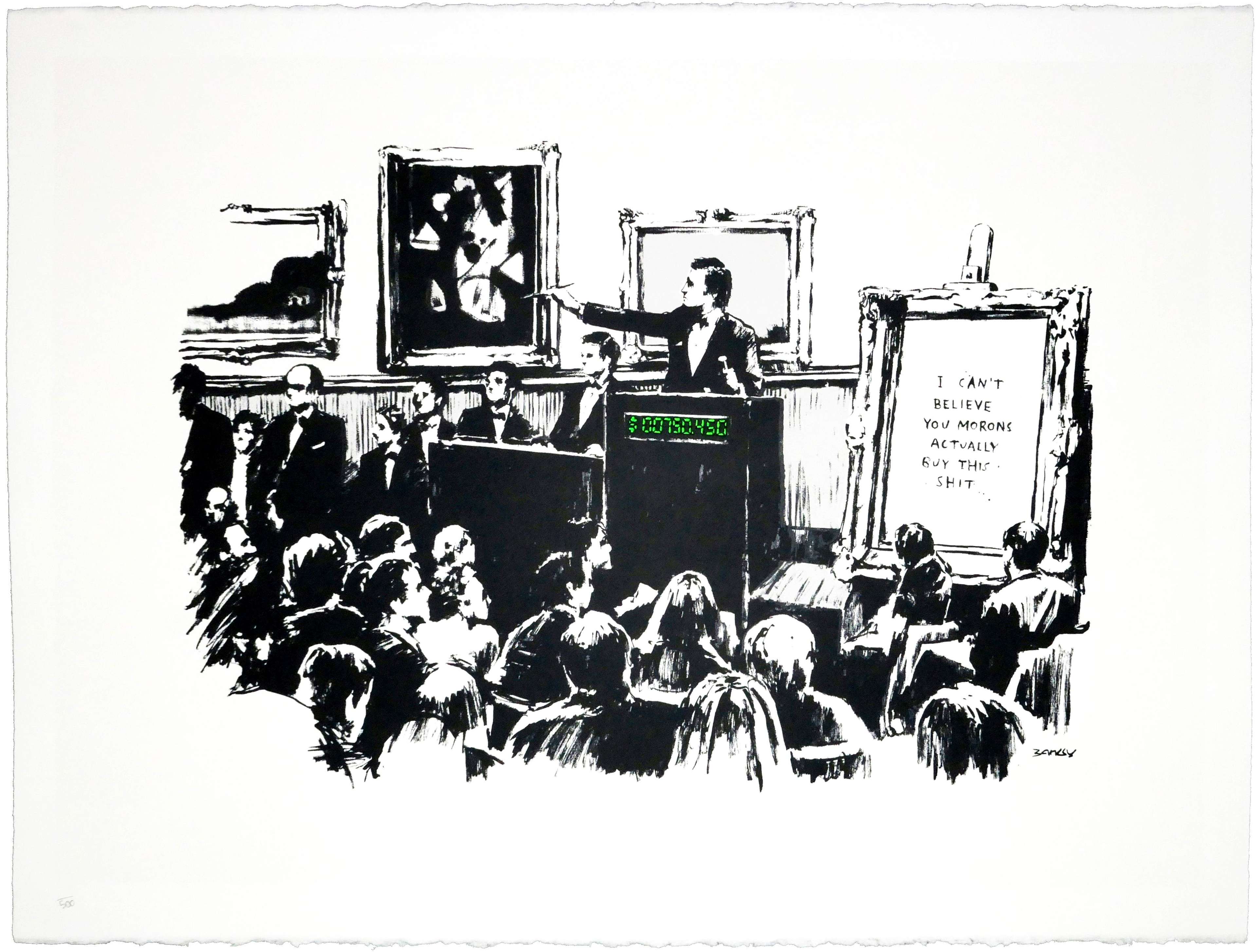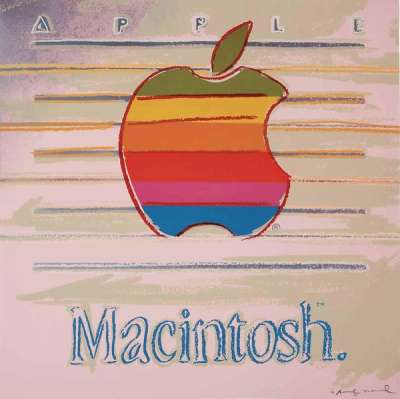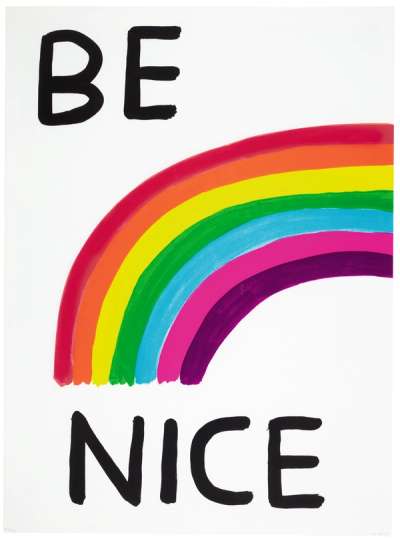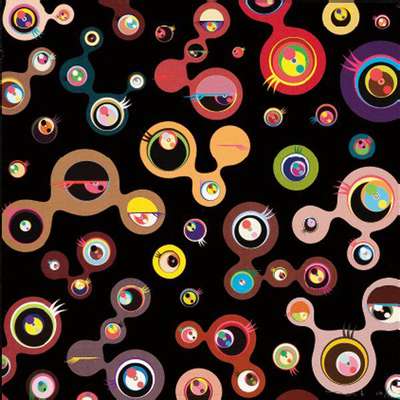 LED © Invader 2017
LED © Invader 2017Live TradingFloor
It is hard to overstate just how much life has changed since the advent of digital technology. Within the art market specifically, it has ushered in a transformative era, redefining the boundaries of creation, distribution and ownership of art. Although this technological revolution has opened new avenues for artistic expression and accessibility, it has also raised a myriad of ethical questions that challenge the traditional tenets of the art world. From the use of artificial intelligence in art creation to the complexities introduced by blockchain for art transactions, the integration of tech in the art market is not just a matter of innovation, but also of ethical contemplation.
The Challenge of Balancing Innovation with Traditional Values
In the art market, the integration of technology presents a unique conundrum: how to balance the relentless pursuit of innovation with the preservation of traditional values and practices that have long defined the art world. This delicate equilibrium is at the heart of the ethical challenges faced by artists, curators, collectors and enthusiasts alike in the age of digital transformation. The advent of technologies such as artificial intelligence, digital imaging, and virtual reality has opened up new frontiers for artistic expression, and artists now have unprecedented tools at their disposal to create works that push the boundaries of imagination. However, this also raises questions about the essence of creativity and the role of human touch in art. Can a piece created by an AI algorithm hold the same emotional and cultural value as one crafted by human hands?
While technology enables the creation of art in novel and exciting ways, there's a growing concern about maintaining artistic integrity. The replication and modification capabilities of digital tools can blur the lines between original and reproduced works, challenging the traditional notions of authenticity and uniqueness that are prized in the art world. Another aspect is the impact of technology on cultural preservation: technology can aid in the preservation and dissemination of art, making it more accessible to a global audience, but there is also a risk of diluting the cultural significance and historical context of art.
The key to addressing these challenges lies in finding a middle ground where technology is used as a tool to enhance and disseminate art, without overshadowing the fundamental principles of artistic creation and appreciation. Establishing ethical guidelines and industry standards can help in navigating these complexities, ensuring that the art market evolves in a way that respects its heritage while embracing the future.
The Rise of Digital Art Platforms: Ethical Implications and Market Dynamics
The technological revolution in the art market has also altered its economic landscape. Digital platforms have democratised access to the art market, enabling artists to reach audiences worldwide and allowing collectors to discover new talents from anywhere. It has also disrupted traditional models and valuation systems that have become obsolete and, while this newfound accessibility is a significant step forward, it also introduces complex ethical implications and alters the traditional market dynamics. These considerations are paramount in the operation of digital art platforms, especially concerning sales and commission structures.
One of the critical challenges posed by these platforms is the balance between accessibility and quality control. Without traditional gatekeeping mechanisms, the market is confronted with the daunting task of ensuring the credibility and quality of art presented online. The valuation and pricing of art in the digital space also diverge from traditional norms, as some platforms have catalysed a shift where an artwork's value is influenced by online popularity and digital scarcity, rather than just gallery or auction prices. Digital platforms make it easier to replicate and distribute art, raising concerns about the originality and ownership of artworks – blockchain technology has emerged as a promising solution, offering a means to authenticate and record the provenance of digital artworks securely.
Issues such as transparent pricing, fair artist compensation and the management of secondary sales and royalties are critical for maintaining an ethical marketplace. Another aspect that should not be overlooked is the environmental impact of digital art platforms, particularly those relying on blockchain, which has a heavy carbon footprint. As the art world becomes increasingly conscious of its role in climate change, it is imperative for digital platforms to adopt sustainable practices.
Authenticity and Reproduction: Navigating the Complexities in the Digital Age
In our age, issues of authenticity and reproduction in the art world have become increasingly complex. The ease with which digital works can be copied and distributed, for example, has brought new challenges to the forefront of art creation and collection. While traditionally authenticity has been determined by an artwork’s unique history and provenance, in the digital realm – where artworks can be perfectly replicated – distinguishing an original NFT from a copy becomes less clear. This blurring of lines raises critical questions about what constitutes originality and authenticity in digital art, complicating notions of ownership and value.
Artists also need to navigate the protection of their rights in a world where their works can be easily copied and shared without permission. The art world must develop ethical guidelines and legal frameworks to protect artists' rights while balancing the benefits of increased accessibility.
In this evolving landscape, the traditional roles of curators, authenticating boards and galleries are also expanding. They now have the responsibility to educate collectors and the public about the nuances of digital art, including issues around authenticity and reproduction, and their role in authenticating and valuing digital art becomes more crucial than ever.
Navigating these complexities involves embracing the opportunities that the digital offers in terms of accessibility and reach, while also addressing the challenges it poses to traditional concepts of value, ownership, authenticity and originality.
AI in Art Creation: Ethical Concerns and Authorship Debates
The integration of AI in art creation is raising significant ethical questions and authorship debates at the moment. A key issue is determining the artist's identity: is it the AI, the programmer, the images they borrowed from, or a combination of all three? This challenges the traditional view of art as a human-centric expression, derived from emotionality. Since AI-generated art is often trained on existing works, it brings up concerns about originality and the unauthorised use of artists' creations, raising legal questions about intellectual property rights and the complexities of ownership in AI-generated art. AI-created artworks entering galleries and auctions could potentially alter the value and perception of human-created art, which has led to concerns about the devaluation of human artistry and the loss of the personal, emotional connection traditionally found in art.
Blockchain and Art: Transparency vs. Anonymity in Art Transactions
Blockchain is a secure, decentralised digital ledger that records transactions across multiple computers, where each transaction is added to a 'block' and linked to previous transactions, creating a 'chain'. This structure makes it very difficult to alter past records, ensuring the integrity and transparency of the data. Originally developed for Bitcoin, blockchain is now used in various fields beyond cryptocurrency. Blockchain technology in the art world offers a balance between transparency and anonymity. It enhances transparency in tracking an artwork's provenance and ownership through an immutable ledger, which is crucial for verifying authenticity and building trust. However, it also allows for anonymity in financial transactions, providing privacy for buyers and sellers while raising potential concerns regarding legality and ethics, such as money laundering.
The key challenge lies in balancing the need for transparent provenance with the desire for anonymous transactions. While transparency benefits the art market by ensuring authenticity, unchecked anonymity can lead to illicit activities in an already problematic industry. Therefore, careful regulatory standards are needed to prevent misuse while leveraging blockchain's advantages. Used correctly, this technology empowers artists and collectors: artists gain control over their work’s distribution and resale, potentially earning royalties, while collectors get assurances about the authenticity and legal history of their acquisitions. Overall, responsibly harnessing blockchain's potential is essential in the art market for its sustainable advancement.
Sustainability in Art Tech: Addressing Environmental Impact
As technology becomes more integral in the art world, it is crucial to address its environmental impact, especially within the context of climate change. The energy consumption of digital technologies poses significant environmental challenges – especially blockchain, which results in significant greenhouse gas emissions. The art community is currently exploring energy-efficient and eco-friendly practices, such as optimising software, using renewable energy and developing sustainable blockchain alternatives.
The production and disposal of materials and tools in physical art creation also have environmental effects, and there is a growing focus on using eco-friendly materials and reducing harmful waste. Artists are increasingly leveraging their work to raise awareness about environmental issues, emphasising the need for sustainability. Collaborative efforts among artists, technologists and environmental experts are essential to develop and implement sustainable practices in art technology. Balancing technological advancement in the art world with environmental sustainability is key, involving a shift towards eco-friendly practices and greater awareness of the ecological impacts of art tech.
Ethical Guidelines for Tech Adoption in Art: A Proposed Framework
As we navigate this new frontier, it becomes imperative to establish ethical guidelines to ensure a balanced integration of new technologies in artistic expression. Key to this is the respect for artistic integrity, which technology should augment rather than dominate, preserving the unique voice and vision of the artist. Transparency in authorship and creation is crucial, especially when AI or digital collaborations are involved. This ensures clear acknowledgment of the roles played by artists, technologists and AI systems, maintaining the authenticity of the creative process. Similarly, equally important is the protection of intellectual property in a digitised art world. Safeguarding artists' rights, particularly in handling copyright issues and AI-generated or inspired works, is essential and artists must maintain control over the use and distribution of their work. Alongside this, ensuring fair compensation for artists remains critical, recognising their contributions in digital and reproduced formats. Data privacy and security are also vital considerations. With the increasing reliance on digital platforms, protecting personal and sensitive information of artists and buyers is essential, including adhering to privacy regulations and securing data on digital marketplaces.
Moreover, technology in art should be a tool for promoting inclusivity and diversity. It should support a range of voices and be accessible to artists and audiences from different backgrounds. Additionally, the environmental impact of art technologies, particularly those like blockchain which are energy-intensive, must be critically evaluated. Adopting sustainable practices is crucial to reduce the sector's carbon footprint, and adaptability and continuous evaluation of these ethical guidelines are necessary. As technology evolves, so too should the frameworks governing its use in art, ensuring they remain relevant and effective in addressing new developments and challenges. By following these principles, the art world can ethically embrace technological advancements, fostering a respectful and harmonious integration of technology in artistic practices.


